Candida can become invasive in people with weakened immune systems, particularly if there is an entry route to a body region that is normally sterile. Learn about who is at risk.

How Does Candida Become Invasive?
 As mentioned, Candida becomes invasive under certain circumstances. Sometimes, Candida gets past a barrier and enters the bloodstream to cause candidemia. Once Candida is in the blood stream, it can spread to other organs. Sometimes, Candida is introduced directly to a normally sterile area without having to travel there through the blood. For example, if there is a hole that leaks after gastrointestinal surgery, intra-abdominal candidiasis can occur.
As mentioned, Candida becomes invasive under certain circumstances. Sometimes, Candida gets past a barrier and enters the bloodstream to cause candidemia. Once Candida is in the blood stream, it can spread to other organs. Sometimes, Candida is introduced directly to a normally sterile area without having to travel there through the blood. For example, if there is a hole that leaks after gastrointestinal surgery, intra-abdominal candidiasis can occur.
All of the normal pathways change when we consider Candida auris, the superbug you may have heard about. To learn more about Candida auris, see the SCIENCE SIDEBAR: Candida auris: A Different Fungal Actor.

Another way Candida can become invasive is when its normal environment changes. Antibiotics can change the microbiome, particularly in the gastrointestinal tract. When patients are on antibiotics for a long period of time, the bacteria that protect against Candida overgrowth are damaged. Candida can overgrow and gain the ability to pass through the intestinal wall, causing invasive candidiasis.
 Candida can become invasive with the creation of ports of entry. Chemotherapy can cause a break in the mucosal membranes of the mouth, gut, and skin that allows Candida to boldly go where it is not supposed to go. Other ports of entry can be caused by gastrointestinal surgery, a hole in the gut (perforation), or a central venous catheter. Certain implanted prosthetic devices have to be tunneled into the body and organisms can migrate into the tissue. When such devices are placed for long periods of time in the body, a biofilm can form on them. This little microbiological city on top of the surface of the implanted device forms a protective surface–it can make it difficult to treat the microbiologic organisms in the film.
Candida can become invasive with the creation of ports of entry. Chemotherapy can cause a break in the mucosal membranes of the mouth, gut, and skin that allows Candida to boldly go where it is not supposed to go. Other ports of entry can be caused by gastrointestinal surgery, a hole in the gut (perforation), or a central venous catheter. Certain implanted prosthetic devices have to be tunneled into the body and organisms can migrate into the tissue. When such devices are placed for long periods of time in the body, a biofilm can form on them. This little microbiological city on top of the surface of the implanted device forms a protective surface–it can make it difficult to treat the microbiologic organisms in the film.
Who is at Risk?
A number of risk factors are associated with invasive candidiasis. Most often, clinicians will look at the number of risk factors a patient has to determine how likely someone is to develop invasive candidiasis. Such “prediction scores” are helpful in determining which patients need therapy early— even before Candida has been diagnosed.
We’ve separated the risk factors by mechanism below.
Risk Factors Associated With Creation of a Portal of Entry for Candida
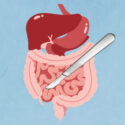
Gut surgery or break

Any major surgery
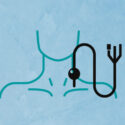
Central venous catheter

Mucositis
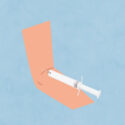
Injection-drug use
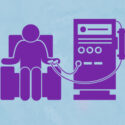
Hemodialysis

Left-ventricular assist device (LVAD)

Severe burns
Risk Factors Associated With Immunosuppression
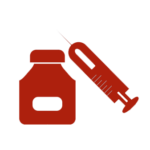 Risk factors associated with immunosuppression are caused by medical examinations or treatments. These are factors that decrease the body’s immune response to Candida, allowing it to spread.
Risk factors associated with immunosuppression are caused by medical examinations or treatments. These are factors that decrease the body’s immune response to Candida, allowing it to spread.
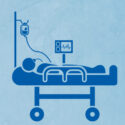
Critical illness
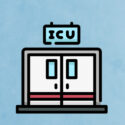
Long-term ICU stay
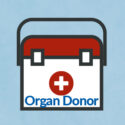
Transplant

Low birth weight (in a baby)

Pancreatitis
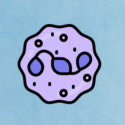
Neutropenia (Low white blood cell count)

Diabetes mellitus
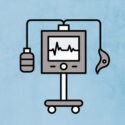
Mechanical ventilation (use of breathing machines in the ICU)
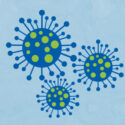
COVID-19
Reducing Risk for Candidiasis
Many steps can be taken to reduce the risk of invasive candidiasis. These include:
 Antifungal prophylaxis. This means prescribing an antifungal agent to prevent the development of invasive candidiasis in patients who are at high risk for the disease. We’ve listed some of the risk factors for invasive candidiasis already—your provider will consider these risks to determine if you need antifungals prophylactically. This prophylaxis is typically given to people who are undergoing solid organ transplantation, have low white blood cell counts, or have received a stem cell or bone marrow transplant. It’s also considered for very-low-birth-weight infants in neonatal intensive care units where there is a high rate of invasive candidiasis.
Antifungal prophylaxis. This means prescribing an antifungal agent to prevent the development of invasive candidiasis in patients who are at high risk for the disease. We’ve listed some of the risk factors for invasive candidiasis already—your provider will consider these risks to determine if you need antifungals prophylactically. This prophylaxis is typically given to people who are undergoing solid organ transplantation, have low white blood cell counts, or have received a stem cell or bone marrow transplant. It’s also considered for very-low-birth-weight infants in neonatal intensive care units where there is a high rate of invasive candidiasis.
 Source control. If there is a port of entry that allows Candida to get where it is not supposed to be (such as a device inside the body), it has to be properly managed. If you have a central line, you may want to ask your facility what they are doing to prevent line-related infections.
Source control. If there is a port of entry that allows Candida to get where it is not supposed to be (such as a device inside the body), it has to be properly managed. If you have a central line, you may want to ask your facility what they are doing to prevent line-related infections.
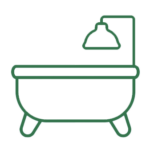 Good Hygiene
Good Hygiene
Specialized baths. Sometimes, people in long-term care benefit from baths in specialized chemicals that reduce the amount of Candida on the skin. This can also prevent one of the lines from getting infected.
Hygiene/Cleaning
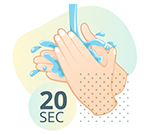
Hand washing is very important for preventing infections. All healthcare personnel should wash their hands with soap and water or an alcohol-based hand rub before and after touching a patient’s body or the tubes going in or out of the body
Clinics should carefully clean equipment and rooms very thoroughly, particularly equipment that goes from one room to another.
Visitors should also wash their hands before and after visiting patients with C. auris. They can use soap and water, but an alcohol-based hand sanitizer is actually preferred.
Keep Open Lines of Communication and Collect Information
Open lines of communication are important in controlling the spread of certain types of Candida such as resistant species like C. auris. With C. auris, it’s important for:
- Patients to communicate if they have ever been diagnosed with C auris or another drug-resistant infection or if they have been hospitalized elsewhere, especially outside the United States.
- Healthcare teams to monitor for potential cases. Patients may be swabbed to determine if they are carrying (colonized) with C auris. Colonized people, although not sick, can spread C. auris to other people.
Preventing Resistance
- Take all medicines as prescribed
Frequently Asked Questions
Generally speaking, most cases of invasive candidiasis are not spread from person to person, with the exception of C. auris, which tends to spread easily in healthcare settings. Healthcare facilities have to take special precautions to prevent C. auris spread. See the Sidebar on C. auris: A Different Fungal Actor.
Candida cleanse diets attempt to remove foods that “grow yeast” from the diet—sugar, white flour, yeast, and cheese. While some propose that eliminating these foods will prevent Candida overgrowth in the gut (yeast syndrome), there is no proof that there is such a thing as a yeast syndrome nor any evidence that a Candida cleanse diet will prevent fungal overgrowth nonetheless invasive candidiasis. However, cutting back on processed foods from the diet does have health benefits, so the Candida cleanse diet may make you feel better!
I am a caregiver for a person who has a history of C. auris. How can I safely care for them at home?
If you are healthy, you are unlikely to become infected or colonized and warrant testing for C. auris. However, you should clean your hands and practice good hygiene. You should wash your hands:
- Before preparing or eating food
- After using the bathroom
- Before and after changing wound dressings or bandages
- After blowing your nose, coughing, or sneezing.


